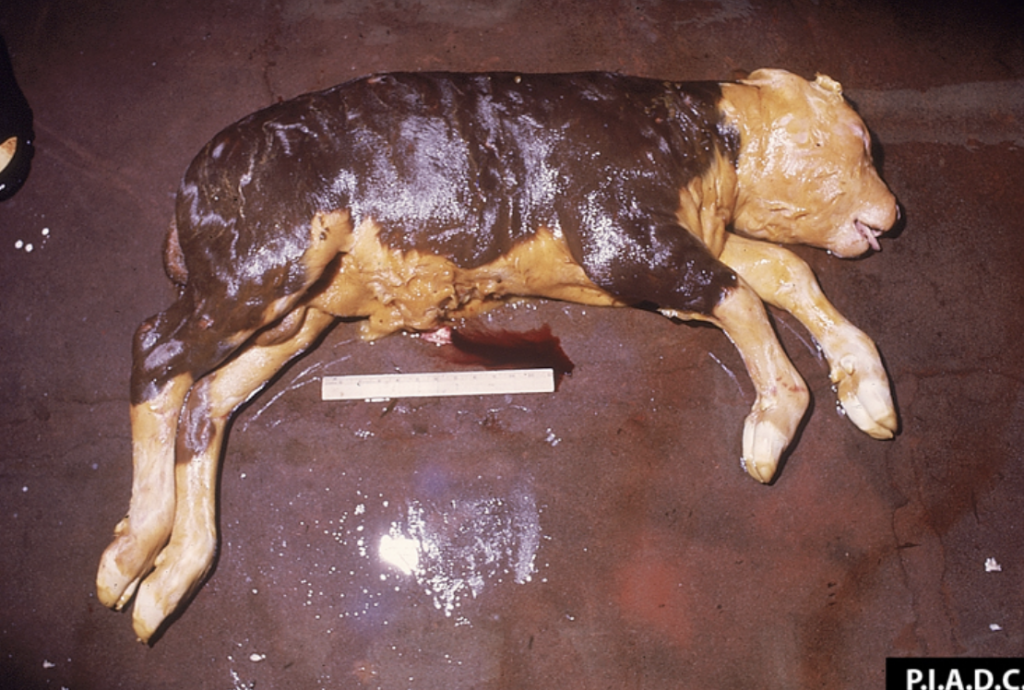
Photo Credit ILRI/ZooLink
Rift Valley Fever Description
Rift Valley Fever or RVF is an acute fever-causing disease affecting animals (cattle, buffalo, sheep, goats, camels) that can also cause illness in humans.
Rift Valley Fever Virus is mainly transmitted by mosquitoes, so outbreaks are mostly seen during heavy rainfall seasons.
Rift Valley fever occurs throughout most of Africa, and has been reported in Kenya.
Rift Valley Fever Symptoms in animals
Sheep, cattle, and goats are the most severely affected. Other animals such as water buffalo, camels, rodents, cats, and dogs can also be infected.
Rift Valley fever tends to affect young animals more severely than mature animals.
In young animals, signs of infection include fever, failure to eat, weakness, diarrhea and sudden death with no major signs of illness.
In older animals, infection may cause fever, discharge from nose, weakness, diarrhea, vomiting, decreased milk production and abortion.
Abortion is often the only sign in mature animals.
Some RVF affected animals may have bloody diarrhea; salivation; nasal discharge and some may have yellowing of the eyes and mouth (jaundice)
During outbreaks of RVF there are increased cases of newborn deaths, abortion and fetal malformation. The aborted fetuses may look digested
Rift Valley Fever transmission in animals
Animals get RVF from infected mosquito bites; animal-to-animal infection can also happen through direct contact with infected tissues/fluids
Infection with RVF might also happen during the re-use of needles during treatment/ vaccination especially when veterinary resources are limited
Rift Valley fever can also possibly be spread by the bite of infected ticks and biting midges.
Rift Valley Fever symptoms in humans
The disease might not have any symptoms or may present as acute fever with headaches and weakness for 10-14 days before recovery
Severe cases of RVF may lead to liver failure; kidney failure; vomiting blood; bloody stool, or bleeding from gums, skin, nose, and injection sites
Rift Valley Fever transmission in humans
Humans can get RVF from bites of infected mosquitoes but are mainly infected after exposure to blood, body fluids or tissues of infected animals.
RVF exposure happens mainly with people working with animals/their carcasses e.g. butchers, slaughterhouse workers and veterinarians.
Severe RVF infection occurs during outbreaks; no human-to-human transmission has been recorded
Death can occur in rare cases and is more likely when the severe form of the disease develops.
Rift Valley Fever Prevention
To prevent RVF infection avoid direct contact with animal blood, body fluids or tissues of infected animals
Avoid slaughtering of animals in areas suspected to have an RVF outbreak to avoid contact with infected livestock
To prevent RVF infection control mosquitoes especially in prolonged rainy seasons, use mosquito repellents and bednets.
Animals in high-risk areas should be vaccinated to protect them against RVF infection
Raise awareness and educate friends and family about signs, symptoms and risk practices associated with RVF infection
Rift Valley Fever Warning
RVF is a notifiable disease; therefore report any suspected case to veterinary authorities in your area
If you suspect RVF, DO NOT touch the aborted fetuses/ blood/ body fluids/ tissues of infected animals!
To prevent RVF infection do not slaughter sick animals or eat meat from affected animal during an outbreak
If you suspect RVF: (1) In animals – contact your veterinarian; (2) In humans – contact your physician
Content provided by Zoonotic and Emerging Diseases Group (ZED) University of Liverpool , International Livestock Research Institute (ILRI), Zoonoses in Livestock in Kenya (ZooLink)